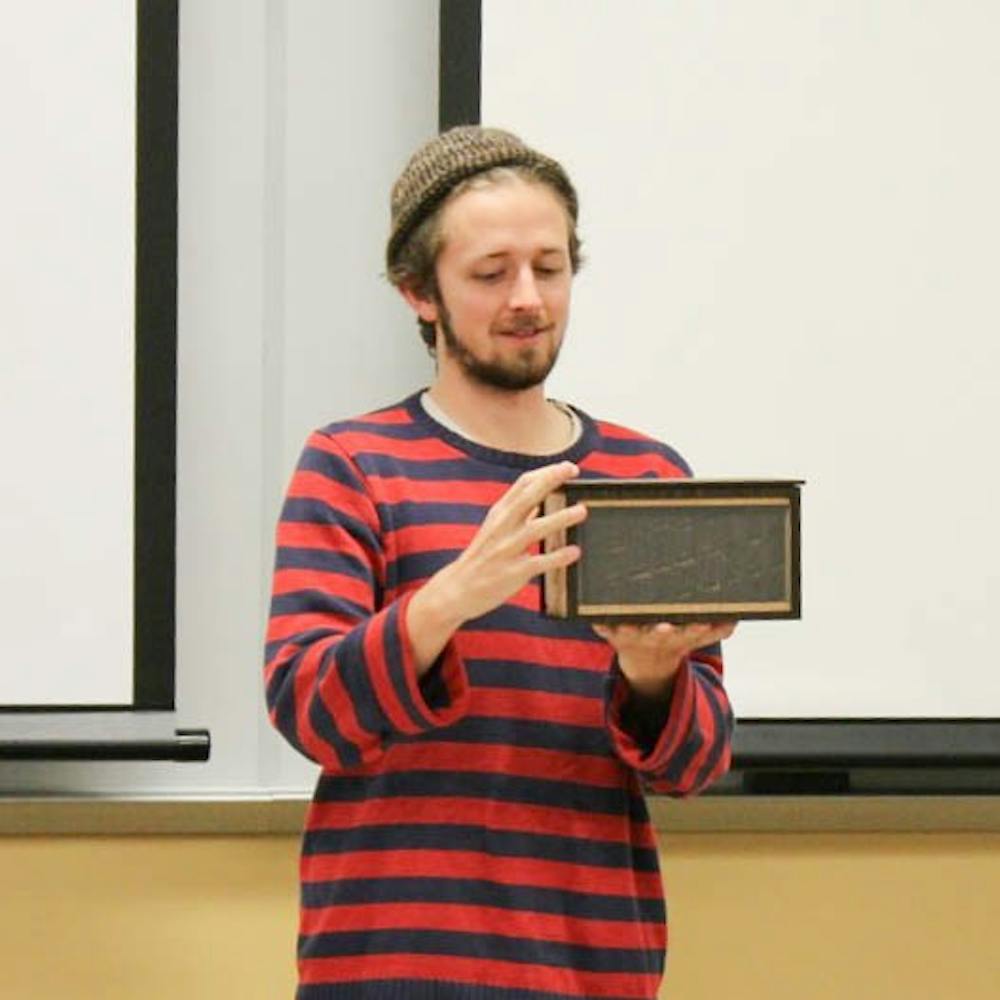Carly Wheeler | Contributor
The Taylor University Computer Science Department is stepping into new territory this semester as students are able to take the class 3D rapid prototyping (COS 270) for the first time.
Taught by engineering project support Steve Dalcher, this pioneer class is diving into an area of computer programming brand new to Taylor academics. COS 270 focuses on bringing the two-dimensional realm into the three-dimensional world through drafting designs on drawing software and then cutting the designs to make physical objects.
Stefan Brandle, department co-chair of computer science and engineering, commented on the milestone the class marks.
"This stuff that used to be just crazy complicated to try to do now is becoming more common," Brandle said. "The ability to . . . sit down and figure it out yourself and at least make yourself something useful, it is really changing things. And so for (the computer science department) to be doing this, I think that is a pretty exciting thing."
The class's progress was demonstrated to the computer science department in the presentation of their midterm projects on Monday, Oct. 15.
The nature of the semester-long project is to allow each student to showcase their own creativity and interests in what they build. The projects all contain lauan wood which were cut with a laser cutter, but the similarities end there. A wide array of objects were created, from a model airplane to a knife block to a miniature Pac-Man game.
Although, at this time of semester, students have begun to grasp what is required to make a 3D object from a 2D design, it would not be this way without many trials and errors in navigating the open-ended assignment.
Dalcher noted the student's nervousness experienced in the first week of class when they received almost no guidelines for the project.
"It is a thought process, and it is a change in how we think," Dalcher said. "So you want to talk about the angst that was going on that first day, like, what do we do? Make something 3D, man."
Some students recreated pieces of their project four or five times in just one day. Dalcher explained how the way to get something right in 3D rapid prototyping is to do just that: make it 3D. That is the best way to know if two pieces will finally fit together or slide smoothly or sit at just the right angle.
Senior Andrew Dorn has made numerous iterations of his project, as each error requires changes in the software and re-cutting the wood. But this tedious process has contributed the new appreciation he has for the class and the problem-solving skills it requires from its participants.
"If anything, it is just a really good way to change my perspective on thinking," Dorn said. "Computer science is already a different way of thinking - a lot of problem solving and conceptualizing and debugging - and this is kind of taking the computer science process and turning it physical."
Each COS 270 student had similar experiences to Dorn when it came to solving small errors that make a large difference in their final product, and yet, they all expressed excitement for what is coming next for the class. In the remaining half of the semester, the students will continue to improve and add to their projects, strengthening the skills they have and honing in the skills they have gained.
As Dalcher is confident the students will produce exceptional final products in December, he expressed his excitement for what they have produced so far, noting they have already surpassed his expectations for the first COS 270 class.
"So far this has been a really fun class," Dalcher said. "I would say each student has invested significant amounts of time outside of class to make it happen, and I could not be more proud of what we have produced."





